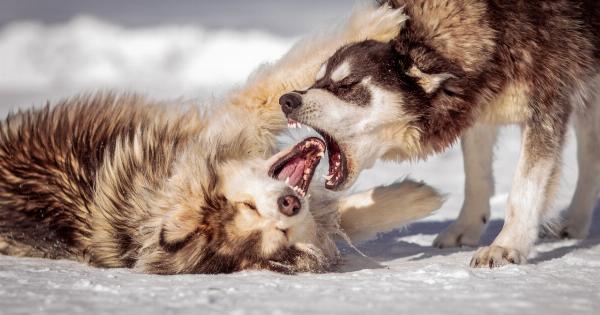Have you ever wondered what your furry friend is trying to communicate to you? Dogs have their own unique language that they use to convey their emotions, needs, and wants.
Understanding the code of dog talk can help strengthen the bond between you and your pet while also ensuring their overall well-being. In this article, we will explore the various ways in which dogs communicate and how you can crack their code.
Understanding Body Language
Dogs are highly expressive creatures that use their body language to communicate. By observing their movements, postures, and gestures, you can gain insight into their feelings and intentions. Here are some key body language cues to look out for:.
Tail Wagging
A wagging tail is often associated with happiness and excitement. However, the speed and position of the wag can provide more information. A slow and low wag may indicate nervousness or submission, while a high and rapid wag could signal agitation.
Ear Positions
Dogs’ ears can be a window into their emotions as well. When their ears are relaxed and facing forward, it usually means that they are alert and interested. On the other hand, flattened ears may suggest fear or anxiety.
Eye Contact
Eye contact is significant in dog communication. A soft, relaxed gaze indicates friendliness, while a prolonged stare can be interpreted as a challenge or aggression.
It’s important to note that some shy or fearful dogs may avoid eye contact altogether.
Facial Expressions
Similar to humans, dogs’ facial expressions can convey a range of emotions. A relaxed mouth and bright eyes often indicate contentment, whereas a wrinkled forehead or bared teeth can signify discomfort or aggression.
Vocalizations
Dogs use various vocalizations to communicate with us and other dogs. While barking is the most common form of vocalization, different barks can have distinct meanings.
For example, a short and sharp bark might mean alertness, while a long and low bark may indicate a warning or threat.
Understanding Context and Environment
Interpreting dog talk goes beyond just observing their body language and vocalizations. It’s crucial to consider the context and environment in which they are communicating. Here are a few factors to take into account:.
Physical Cues
Take note of any physical cues or triggers that may influence your dog’s behavior. For instance, if they lower their body and tuck their tail between their legs when guests arrive, it can suggest anxiety or fear of strangers.
Environmental Factors
The environment plays a significant role in dog communication. Pay attention to how your dog reacts in different situations or places.
They may display excitement when you reach for their leash, indicating a desire to go for a walk, or they may show aggression when encountering unfamiliar dogs or people.
Consistency in Behavior
When deciphering your dog’s communication, consistency is key. Observe patterns in their behavior and the corresponding outcomes.
For example, if your dog barks persistently when they want to go outside, and they stop barking once you open the door, it suggests a clear communication pattern.
Respecting Personal Space
Just like humans, dogs have boundaries and personal space. It’s crucial to respect their need for personal space and not force interactions.
If your dog moves away or avoids physical contact, it’s a clear indication that they are not comfortable with being approached at that moment.
Training and Reinforcement
In addition to understanding your dog’s communication, training plays a crucial role in establishing a strong bond and effective communication.
Positive reinforcement-based training methods can help reinforce desirable behaviors and encourage better communication between you and your dog.
Conclusion
Cracking the code of dog talk can be an incredibly rewarding experience. By paying attention to their body language, vocalizations, and environmental factors, you can gain a deeper understanding of your furry companion.
Remember to always approach communication with empathy, respect their personal space, and provide appropriate training and reinforcement. Strengthening your communication with your dog will lead to a happier and healthier relationship for both of you.


























